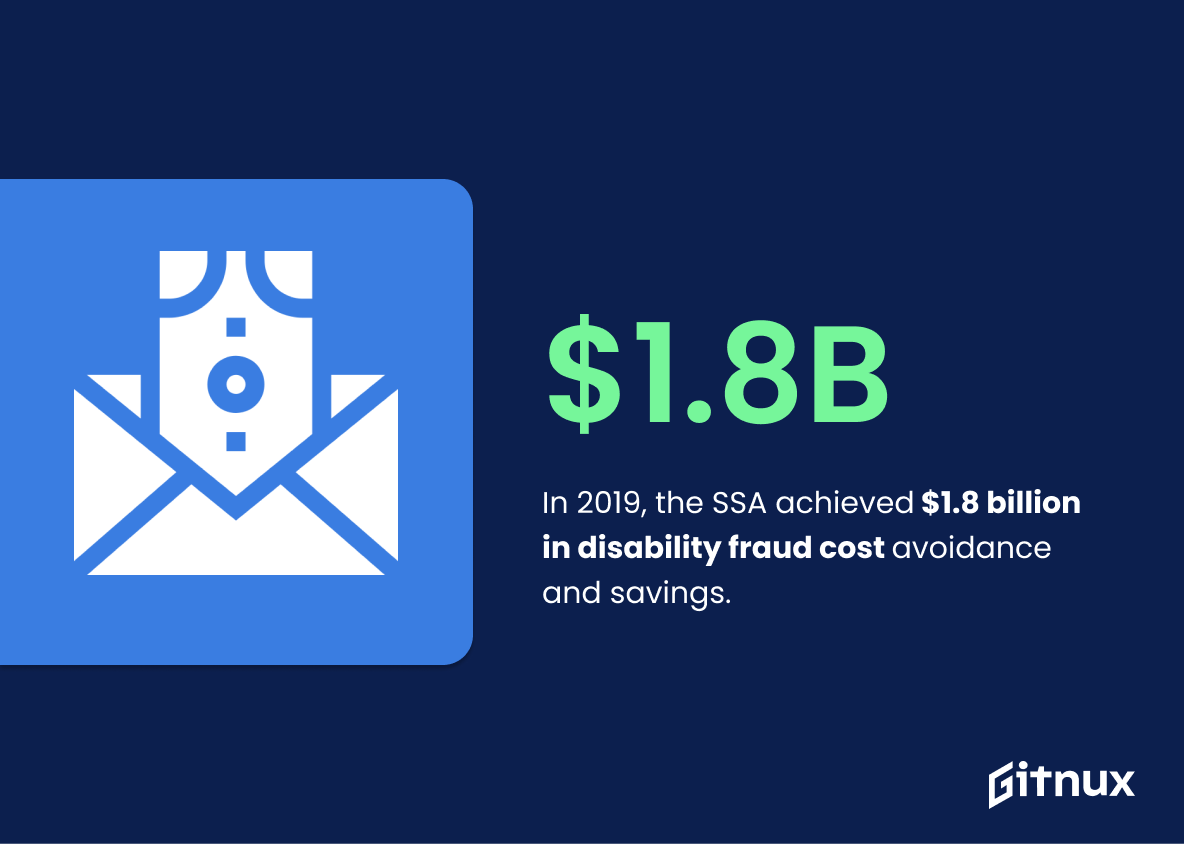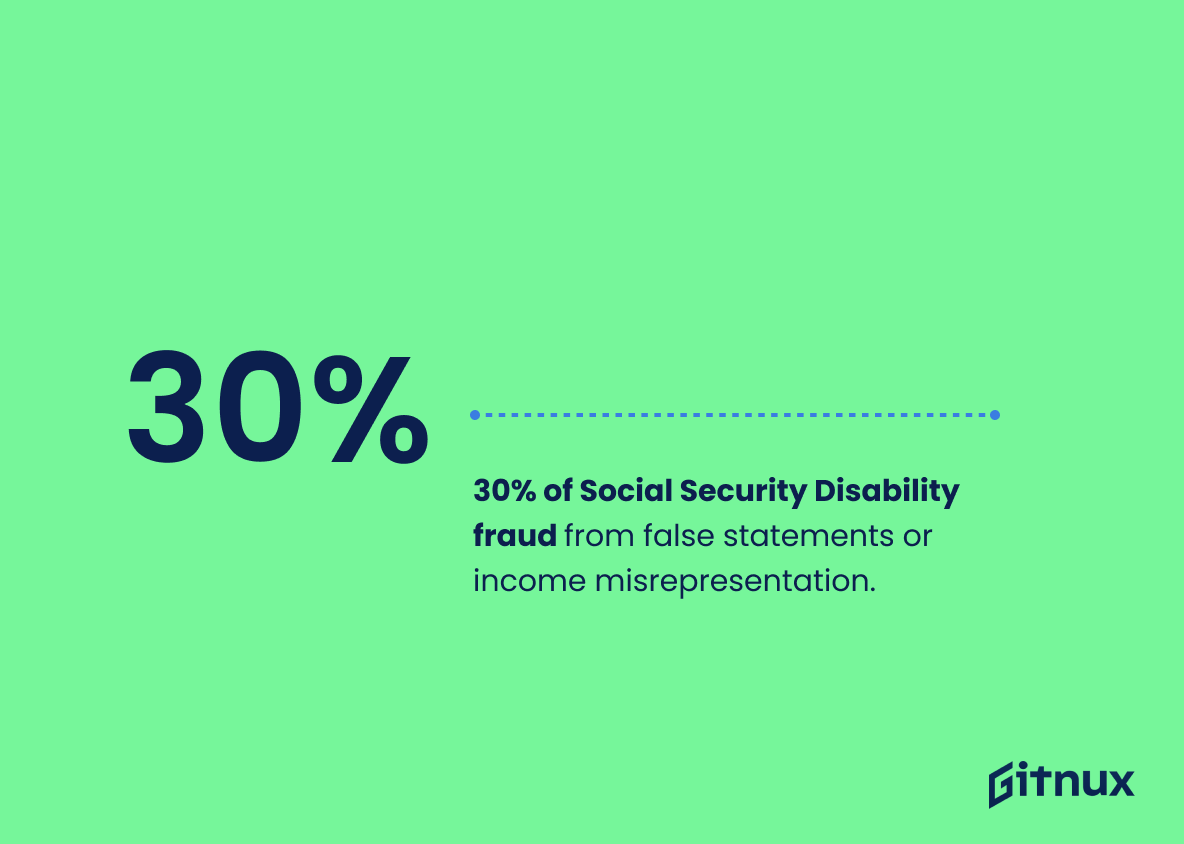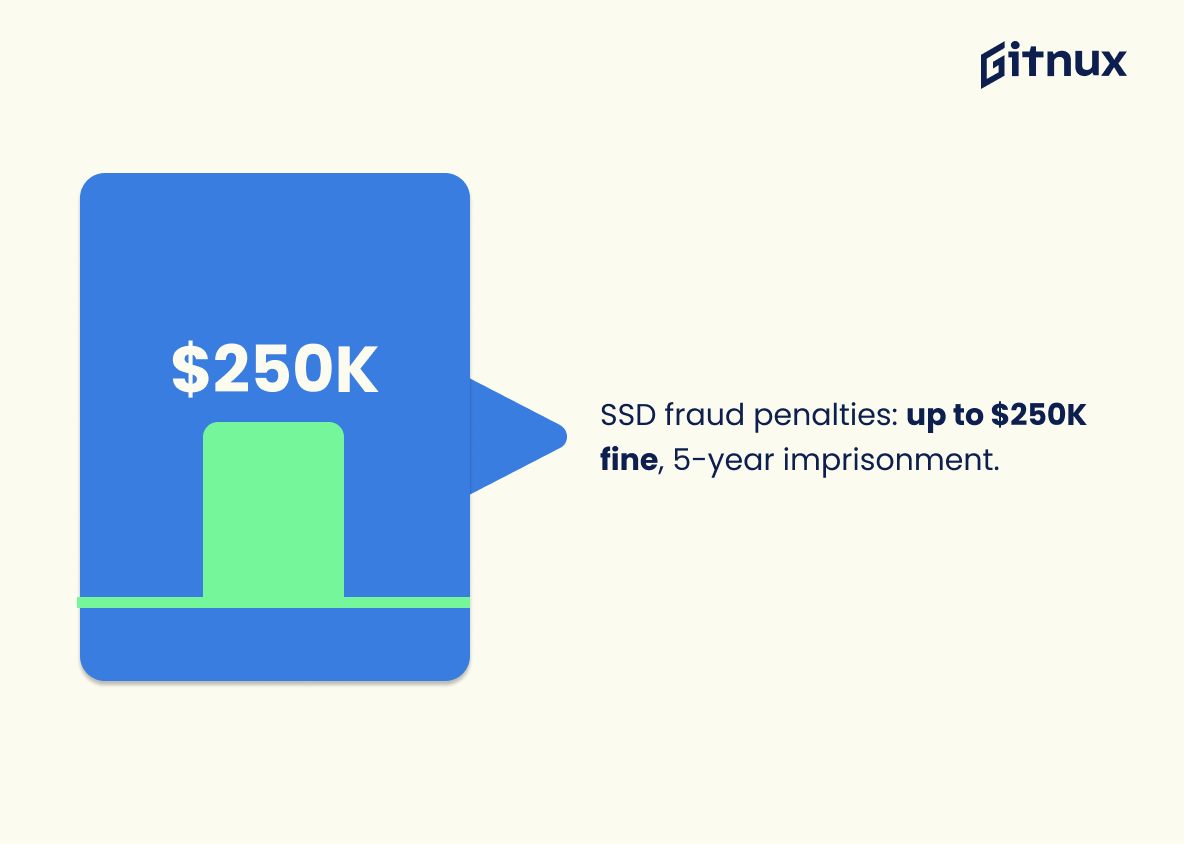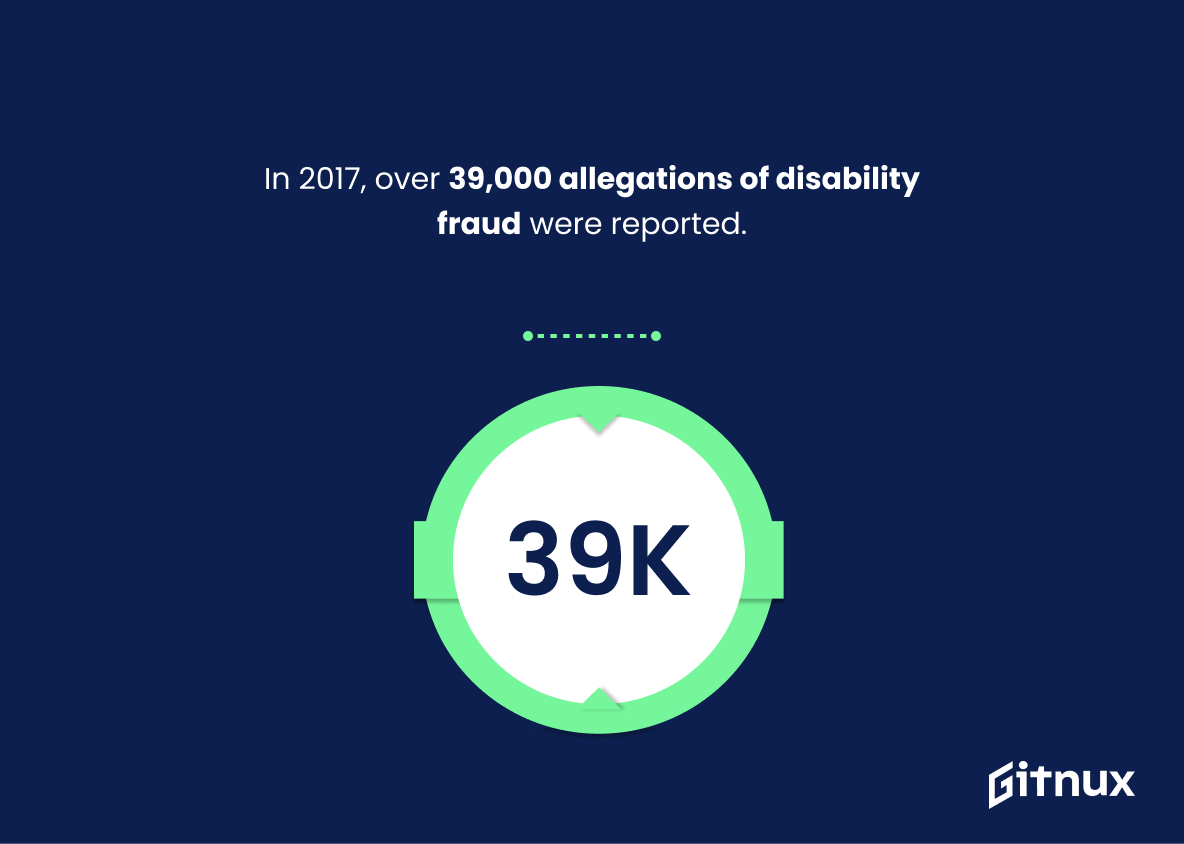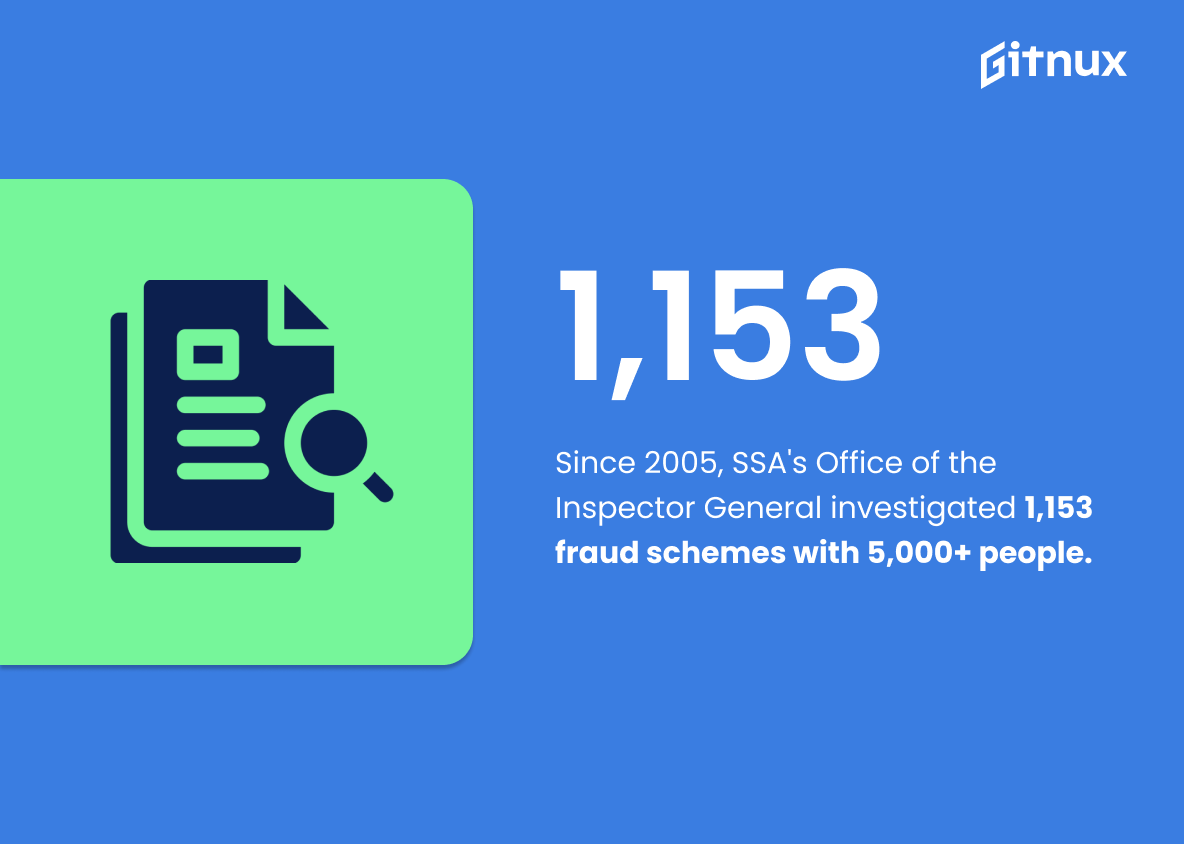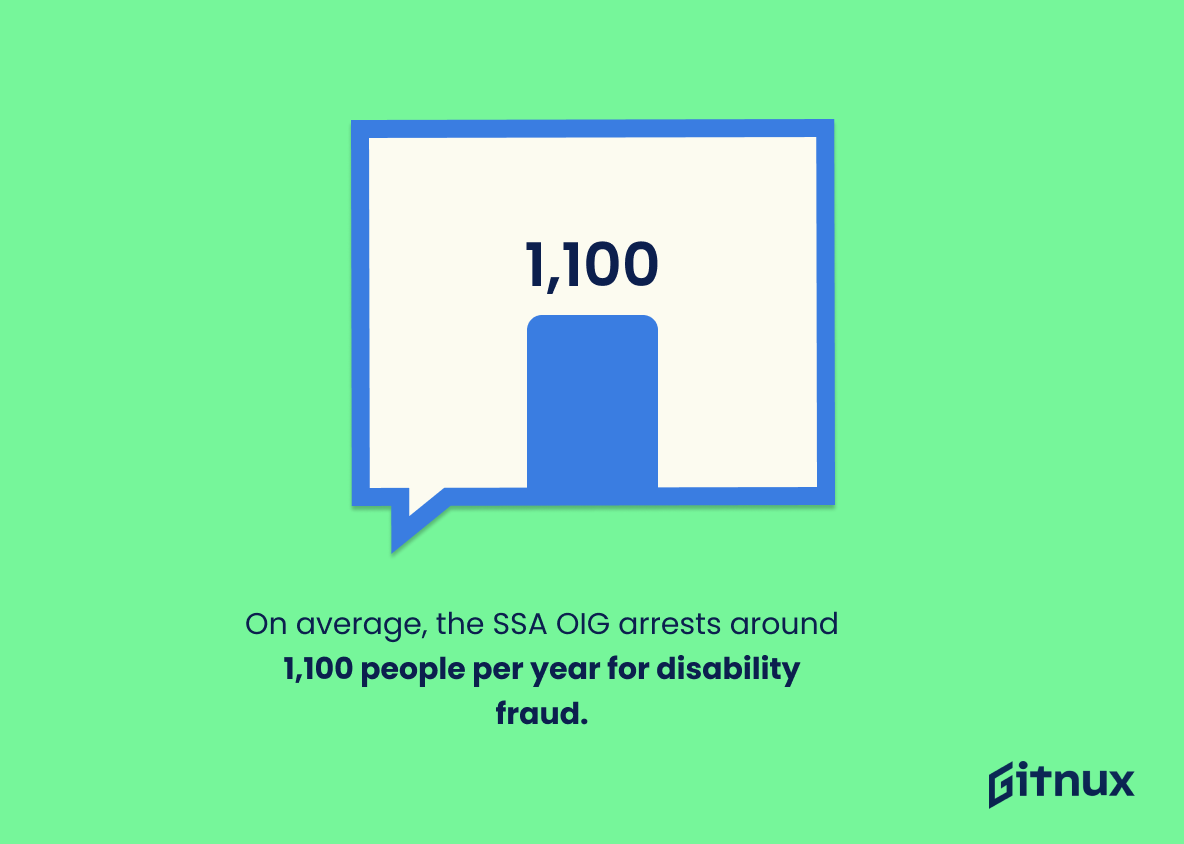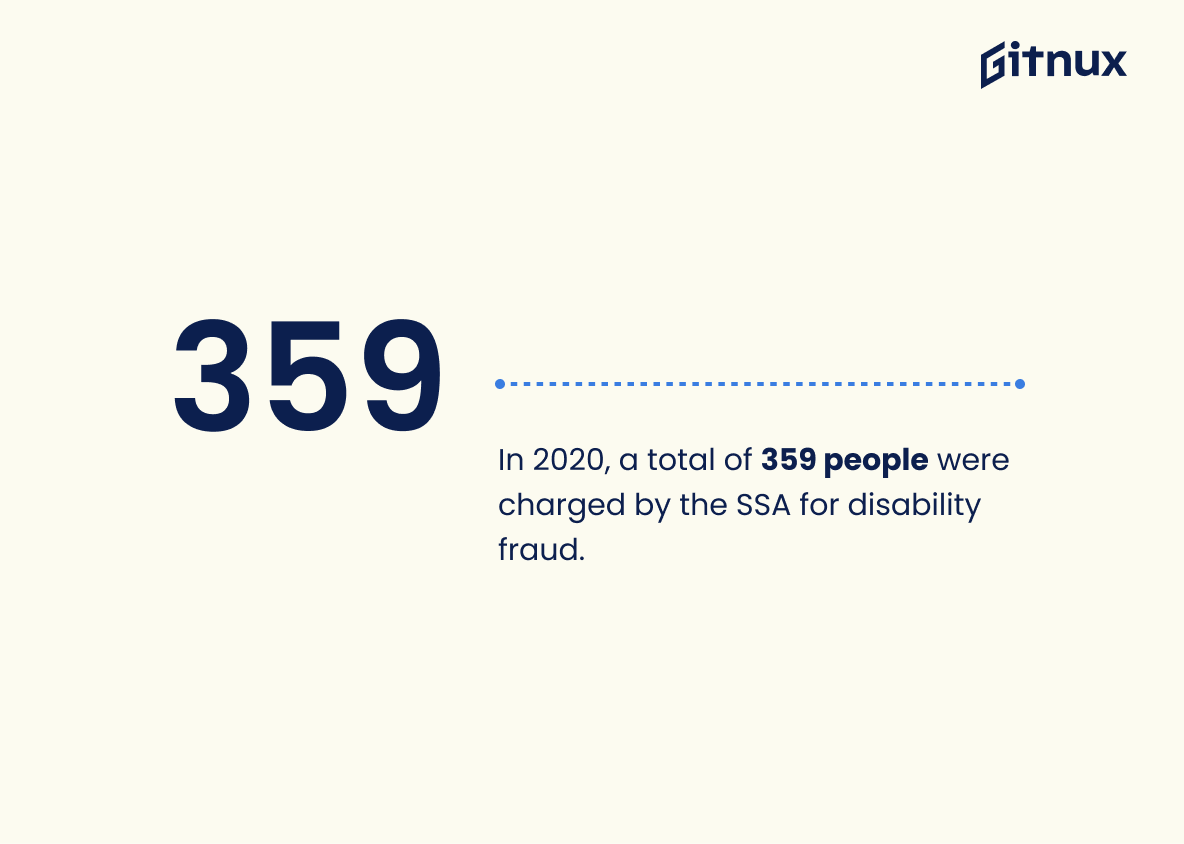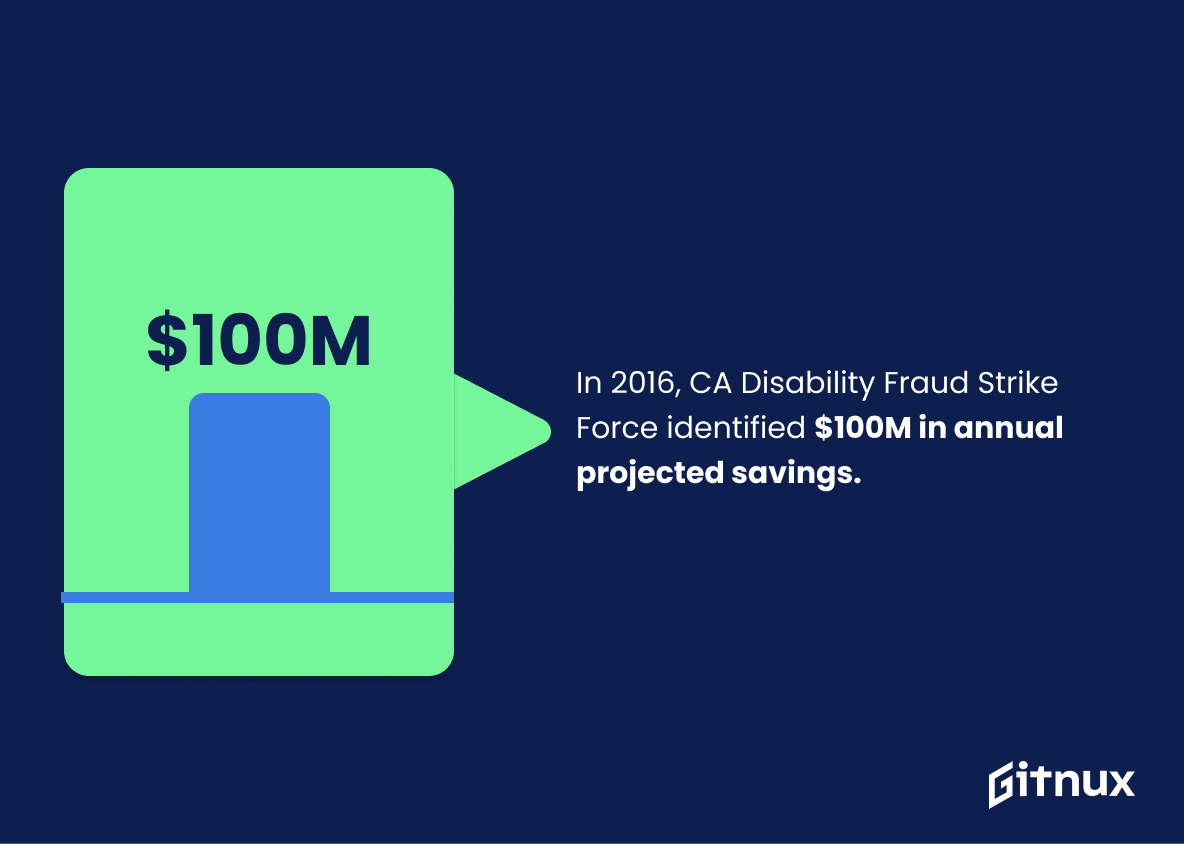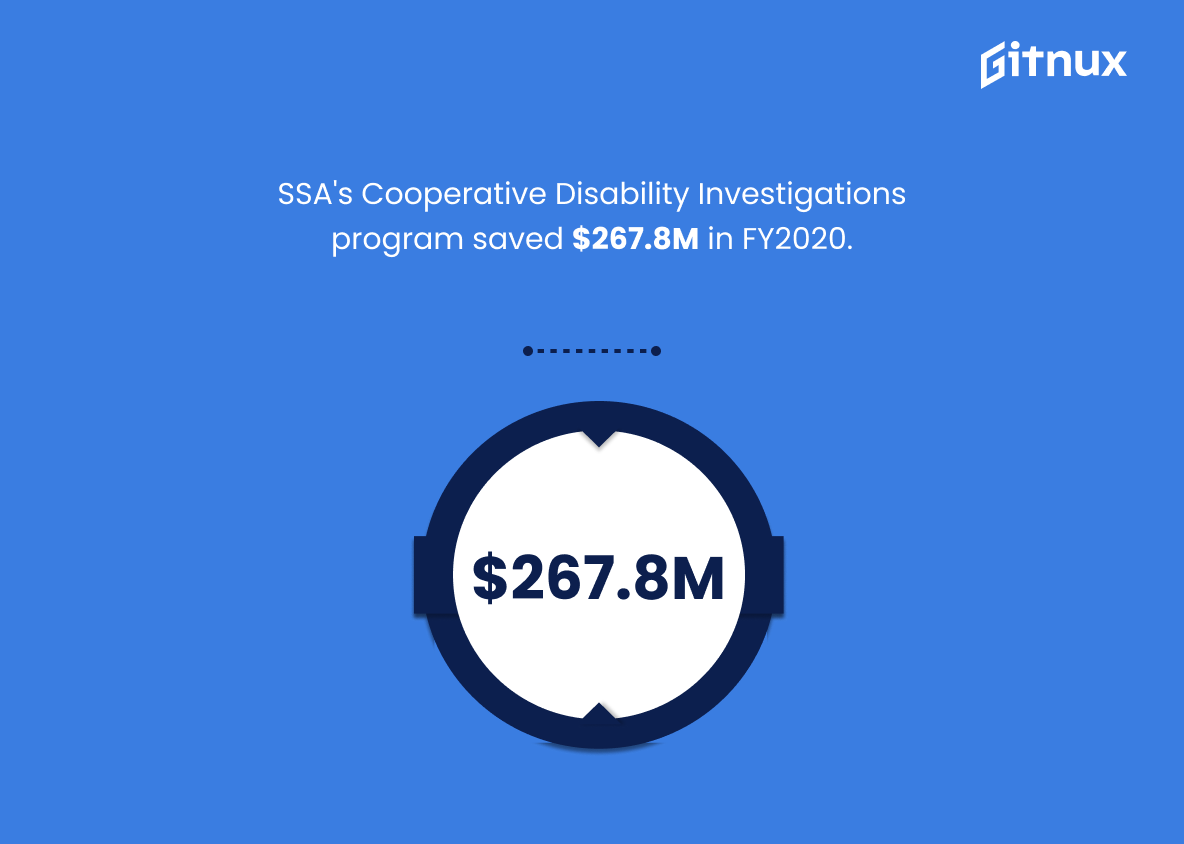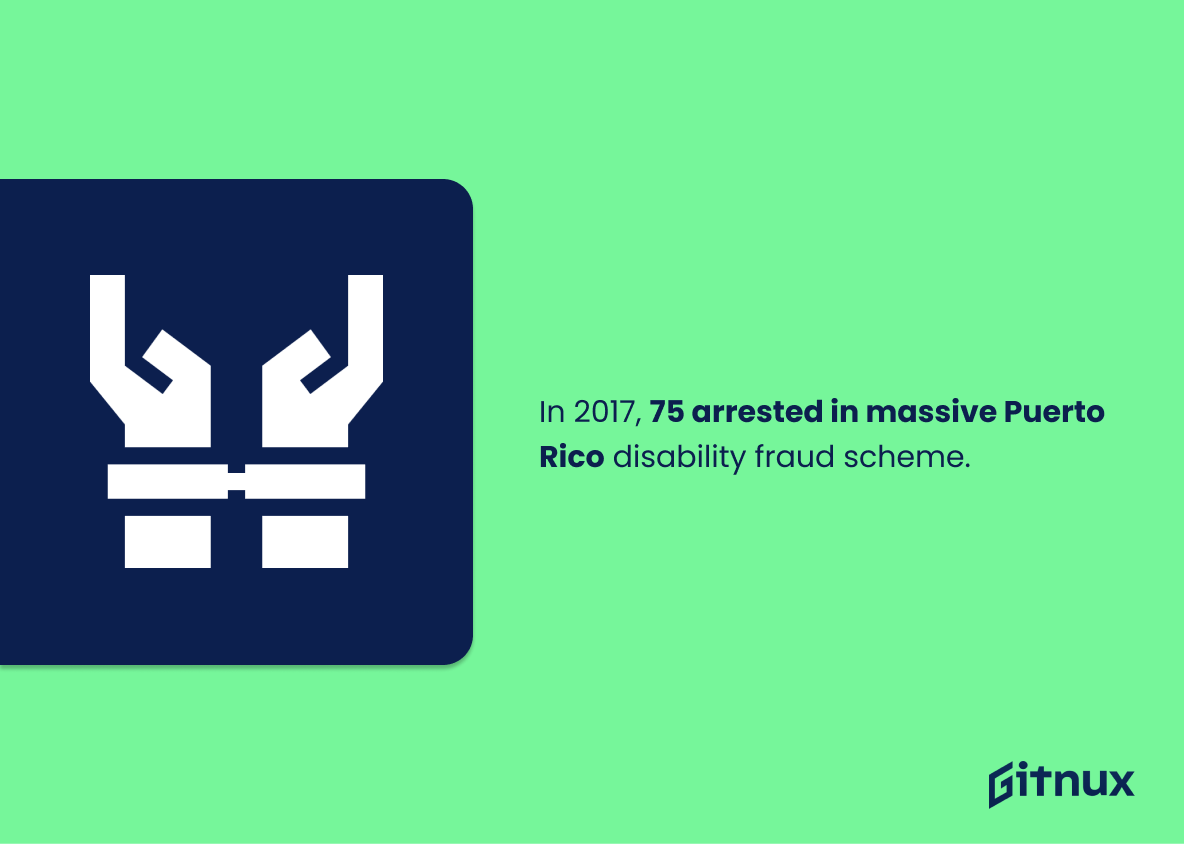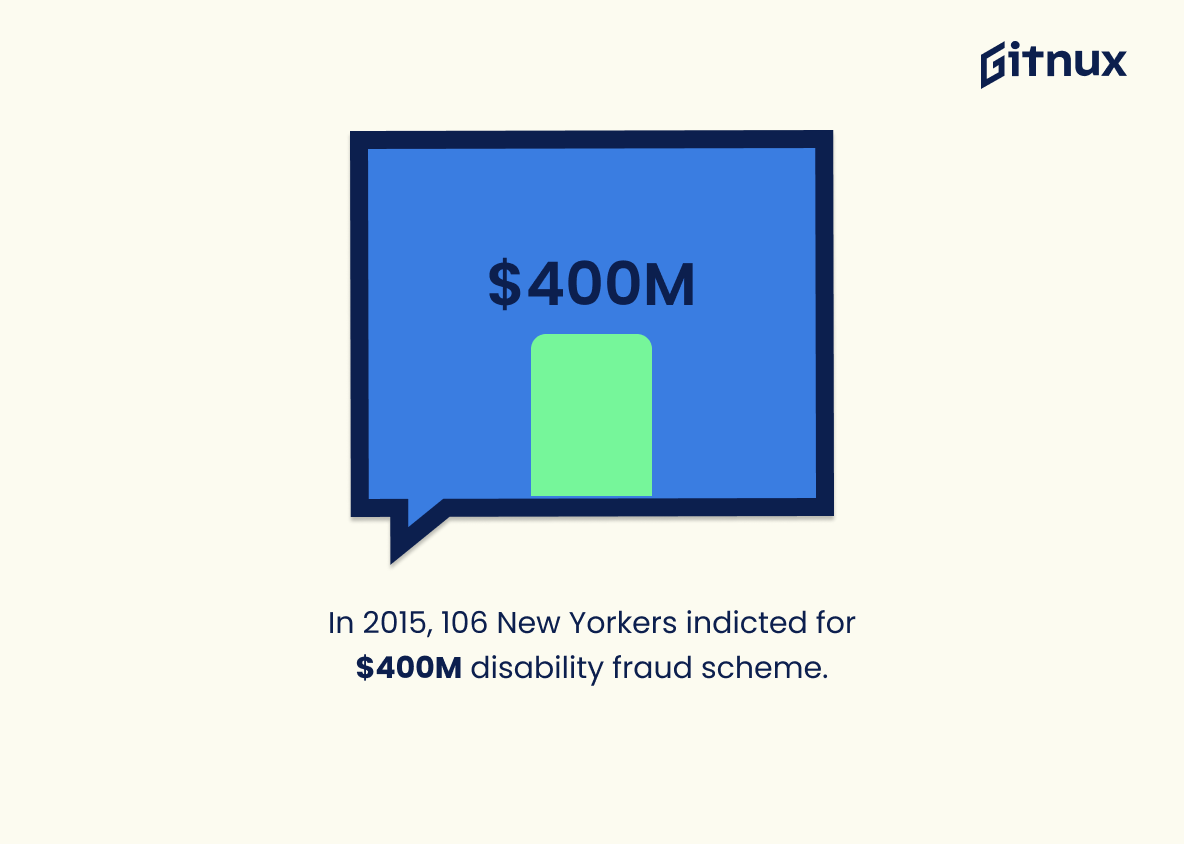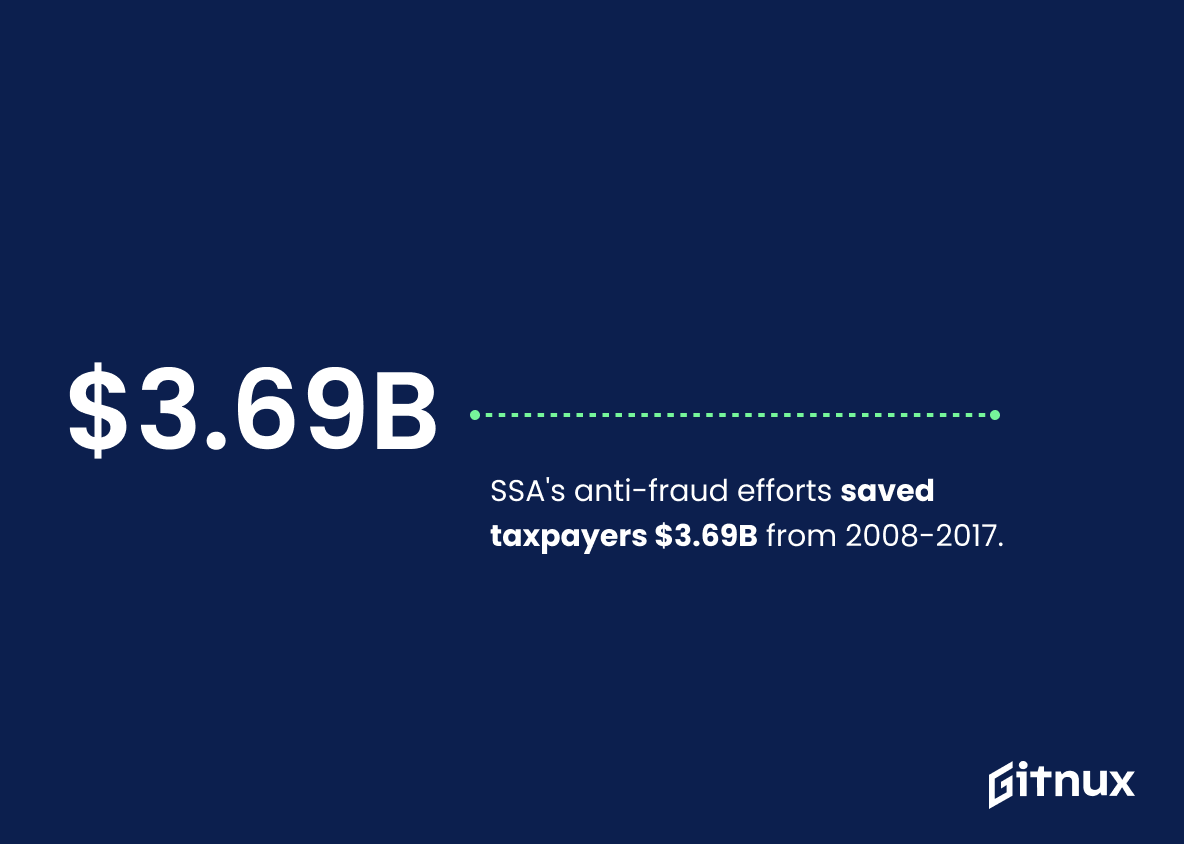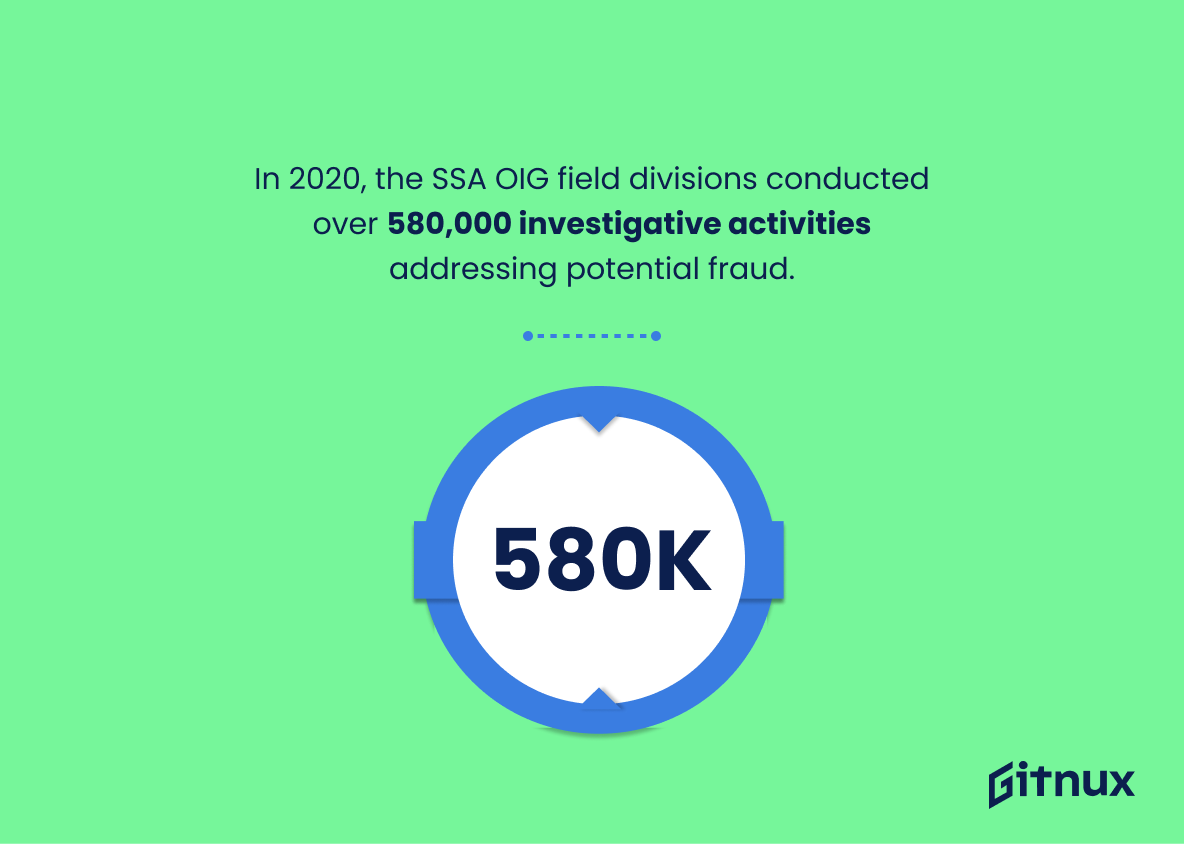Social Security Disability (SSD) fraud is a serious issue in the United States. According to statistics from the Social Security Administration (SSA), approximately 10% of SSD cases are initially suspected of fraud, and over $174 million in potential disability fraud was identified by SSA in 2020 alone. In 2019, SSA achieved an impressive $1.8 billion cost avoidance and savings due to their efforts against disability fraud.
The estimated 1% of all payments that are fraudulent can result in hefty penalties for those found guilty – up to a maximum fine of $250,000 and five years imprisonment – as well as significant losses for taxpayers who fund these programs. Over 41,000 allegations were reported just last year; 30% being attributed to false statements or misrepresentation regarding income or employment status while 39,000 allegations were reported back in 2017 with one massive scheme involving 75 individuals resulting in stolen benefits amounting to over $400 million dollars.
Since 2005 when the Office of Inspector General began investigating such schemes they have uncovered more than 5 thousand people involved across 1153 different investigations leading them towards achieving an incredible total recovery rate since 2008-2017 at around 3 point 6 nine billion dollars. The OIG field divisions conducted 580 thousand investigative activities addressing potential frauds only this past year which resulted into 119 million dollar recoveries from California’s Disability Fraud Strike Force teams alone along with 42 million dollar theft case outta New York based on 2019 records followed by Minnesota’s own scam worth 1 point 9 Million Dollars back on 2017.
In conclusion it is clear that social security disability insurance trust funds remain vulnerable targets for criminals looking make quick money off unsuspecting victims but thanks largely due diligent work done by our government agencies like Social Security Administration we continue making progress towards curbing down such illegal activities thus saving billions upon billions every single year not only protecting innocent citizens but also safeguarding public finances too.
This statistic serves as a stark reminder that Social Security Disability fraud is a real issue that needs to be addressed. It highlights the need for greater oversight and enforcement of the system to ensure that those who are truly in need of assistance are able to receive it.
In 2020, the United States Social Security Administration (SSA) identified over $174 million in potential disability fraud.
This statistic is a stark reminder of the prevalence of disability fraud in the United States. It highlights the need for increased vigilance and enforcement of Social Security Disability fraud laws, as well as the importance of educating the public about the risks and consequences of such fraud.
Social Security Disability Fraud Statistics Overview
In 2019, the SSA achieved $1.8 billion in disability fraud cost avoidance and savings.
This statistic is a testament to the success of the Social Security Administration’s efforts to combat disability fraud. It demonstrates that the SSA is actively working to protect the integrity of the disability system and ensure that only those who are truly eligible for benefits receive them. This is an important step in ensuring that the Social Security Disability program remains a viable and reliable source of support for those who need it.
The SSA estimates that 1% of all disability payments are fraudulent.
This statistic is a stark reminder of the prevalence of Social Security Disability fraud. It serves as a warning that even a small percentage of fraudulent payments can have a significant impact on the system as a whole. It is a call to action for those who are responsible for ensuring the integrity of the system and for those who are considering applying for disability benefits.
Approximately 30% of the committed fraud in Social Security Disability is due to false statements or misrepresentation of income or employment status.
This statistic is a stark reminder of the prevalence of fraud in Social Security Disability, highlighting the need for greater vigilance and oversight. It serves as a warning that false statements and misrepresentation of income or employment status are major contributors to the problem, and that steps must be taken to ensure that these activities are not allowed to continue unchecked.
Penalties for SSD fraud can include up to a $250,000 fine and a maximum imprisonment of five years.
The severity of the penalties for SSD fraud serves as a stark reminder of the consequences of engaging in such fraudulent activities. With a maximum fine of $250,000 and a maximum imprisonment of five years, it is clear that the law takes this type of fraud seriously and is not afraid to punish those who are found guilty.
In 2017, over 39,000 allegations of disability fraud were reported.
This statistic is a stark reminder of the prevalence of disability fraud in our society. It serves as a call to action for those who are concerned about the misuse of Social Security Disability benefits and the potential for abuse of the system. It is a reminder that we must remain vigilant in our efforts to protect the integrity of the Social Security Disability system and ensure that those who are truly in need of assistance are able to receive it.
Since 2005, the SSA’s Office of the Inspector General has investigated 1,153 fraud schemes involving more than 5,000 people.
This statistic is a stark reminder of the prevalence of Social Security Disability fraud schemes. It highlights the fact that, since 2005, thousands of people have been involved in fraudulent activities, demonstrating the need for increased vigilance and enforcement of the law.
On average, the SSA OIG arrests around 1,100 people per year for disability fraud.
This statistic serves as a stark reminder of the prevalence of disability fraud in the United States. It highlights the need for vigilance and enforcement of the Social Security Administration’s regulations to ensure that those who are truly in need of disability benefits are able to receive them. It also serves as a warning to those who may be tempted to commit fraud, that the SSA OIG is actively working to identify and prosecute those who attempt to take advantage of the system.
In 2020, a total of 359 people were charged by the SSA for disability fraud.
This statistic is a stark reminder of the prevalence of disability fraud in 2020. It serves as a warning to those who may be tempted to take advantage of the Social Security system, and it highlights the need for continued vigilance in order to protect the integrity of the system.
In 2016, Disability Fraud Strike Force teams in California identified $100 million in annual projected savings for taxpayers.
This statistic is a testament to the effectiveness of the Disability Fraud Strike Force teams in California. It demonstrates that their efforts have resulted in a significant amount of money being saved for taxpayers, which is a major victory in the fight against Social Security Disability Fraud. It also serves as a reminder that the issue of fraud is still a major problem and that more needs to be done to combat it.
SSA’s Cooperative Disability Investigations program contributed an estimated $267.8 million in projected savings to SSA’s disability programs in fiscal year 2020.
This statistic is a testament to the effectiveness of the SSA’s Cooperative Disability Investigations program in curbing fraud in Social Security Disability programs. It demonstrates that the program is successfully identifying and preventing fraudulent claims, thus saving the SSA millions of dollars in the process. This is an important point to make in a blog post about Social Security Disability Fraud Statistics, as it shows that the SSA is taking proactive steps to combat fraud and protect its resources.
In 2017, a massive disability fraud scheme was uncovered in Puerto Rico, resulting in the arrest of 75 individuals.
This statistic serves as a stark reminder of the prevalence of Social Security Disability fraud. It highlights the need for vigilance and enforcement of laws to protect the integrity of the system and ensure that those who are truly in need of assistance are able to receive it.
In 2015, over 106 people in New York were indicted for a disability fraud scheme that amounted to over $400 million in fraudulent benefits.
This statistic is a stark reminder of the magnitude of disability fraud that is occurring in New York. It is a shocking figure that highlights the need for greater awareness and prevention of this type of fraud. It is a call to action for those who are concerned about Social Security Disability Fraud Statistics to take steps to ensure that such schemes are not allowed to continue.
Between 2008 and 2017, the Social Security Administration’s fraud detection and prevention efforts saved taxpayers an estimated $3.69 billion.
This statistic is a testament to the Social Security Administration’s success in combating fraud and protecting taxpayers’ hard-earned money. It is a clear indication that the SSA’s efforts to detect and prevent fraud are paying off, and that the agency is taking the necessary steps to ensure the integrity of the Social Security system. This is an important point to make in a blog post about Social Security Disability Fraud Statistics, as it shows that the SSA is actively working to protect the public from fraudulent activity.
In 2017, a disability fraud case in Minnesota involved stealing over $1.9 million from the Social Security Administration.
This staggering statistic serves as a stark reminder of the severity of Social Security Disability fraud. It highlights the need for increased vigilance and enforcement to protect the integrity of the system and ensure that those who are truly in need of assistance are able to receive it.
In 2020, the SSA OIG field divisions conducted over 580,000 investigative activities addressing potential fraud.
This statistic is a powerful indicator of the SSA OIG’s commitment to combatting fraud in the Social Security Disability system. It demonstrates the sheer magnitude of their efforts to investigate and address potential fraud, and serves as a reminder of the importance of staying vigilant against fraudulent activity.
Conclusion
The statistics presented in this blog post demonstrate the prevalence of Social Security Disability fraud and the efforts taken by the United States Social Security Administration (SSA) to combat it. In 2020, SSA identified over $174 million in potential disability fraud and achieved $1.8 billion in cost avoidance and savings from 2019 alone. The penalties for SSD fraud can be severe, with a maximum fine of up to $250,000 or imprisonment for five years or both. Since 2005, SSA’s Office of Inspector General has investigated 1,153 schemes involving more than 5,000 people resulting in an estimated total savings of taxpayers’ money amounting to around $3.69 billion between 2008-2017 period alone. It is clear that while there are still cases where individuals attempt fraudulent activities related to social security disability benefits; these numbers have been significantly reduced due to increased awareness as well as improved detection methods employed by the SSA OIG field divisions which conducted over 580 thousand investigative activities addressing potential frauds just last year itself.
References
0. – https://www.abc7news.com
1. – https://www.disabilitybenefitscenter.org
2. – https://www.disabilitysecrets.com
3. – https://www.nypost.com
4. – https://www.ssa.gov
5. – https://www.ballotpedia.org
6. – https://www.justice.gov
7. – https://www.migraine.com
8. – https://www.benefits.com
9. – https://www.oig.ssa.gov
ZipDo, cited June 2023: Social Security Disability Fraud Statistics
